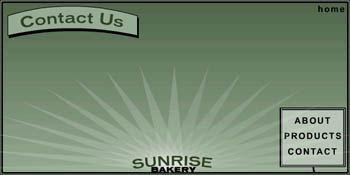In subsequent sections you'll go through the steps to create the application yourself.
Open the authoring document
It's helpful to analyze the completed authoring document, which is a FLA file, to see how the author designed the application. You should examine what kinds of scripts were used to add interactivity, and understand what you are going to create.
The files for this tutorial are located in the Samples and Tutorials folder in the Flash installation folder. For many users, particularly in educational settings, this folder is read-only. Before proceeding with the tutorial, copy the entire Script Assist tutorial folder to the writable location of your choice.
On most computers, you will find the Script Assist tutorial folder in the following locations:
-
In Windows: boot drive \Program Files\Macromedia\Flash 8\ Samples and Tutorials\Tutorial Assets\ActionScript\Script Assist.
-
On the Macintosh: Macintosh HD /Applications/Macromedia Flash 8/ Samples and Tutorials/Tutorial Assets/ActionScript/Script Assist.
Copy the Script Assist folder to another location on your hard disk to which you have access. In the Script Assist folder, you will find a Flash file called scriptassist_complete.fla. Double-click the file to open it in Flash. You now see the completed tutorial file in the Flash authoring environment.
Review the completed FLA file
In the completed FLA file, you will see all the objects (buttons, movie clips, and graphics) that make up the sample application. The application, a Flash-based company information website, looks like this:
The completed FLA file

There are three movie clips in the application:
-
The Title movie clip, which displays the section titles of the site when the user clicks the corresponding navigation links (Home, About, Products, Contact).
-
The Menu and Menu tween movie clips, which display the primary navigation links (buttons) and together create an animation when the application is run.
The application has four buttons:
-
The About, Products, Contact, and Home buttons provide the navigation for the application.
In this tutorial you will add the ActionScript code to enable the buttons to navigate to the separate sections of the site.